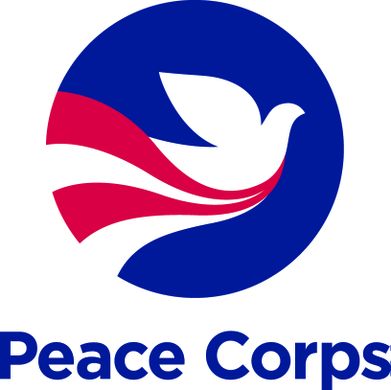Life after graduation and entering the “real world” is a scary thought for many college seniors. Most graduates continue onward to graduate school or take on a classic nine to five job. Some, however, go down a different path: joining the Peace Corps.
“I want to volunteer with the Peace Corps because I think it’s important to give back to the community,” said Samantha Fagan, a freshman interested in going into the environmental sector of Peace Corps after graduation. “Volunteering with Peace Corps puts life into perspective, which is going to be crucial once we aren’t living in the comfort of college.”
Established in 1961 by United States President John F. Kennedy, the Peace Corps is a volunteer agency dedicated to addressing challenges in communities around the world. Initiatives include fighting HIV/AIDS, ending the hunger crisis, teaching sustainable agricultural skills and promoting education.
Volunteers provide assistance to over 60 countries in Africa, Asia, Central and South America, Eastern Europe, the Middle East, the Caribbean and the Pacific Islands. Before embarking on the journey, volunteers have three months of training in preparation for the 27 months of service in the community they are placed.
“I would honestly be fine volunteering anywhere,” said Fagan. “Everywhere you go, people need help.”
Fagan has always been an active member of her community. She volunteered on various service projects in the past, including a refugee resettlement agency over the past few summers. She’s also gone on regular mission trips with her church in Chicago, Illinois. Fagan additionally participated in one of the University of Miami’s alternative breaks last semester, working with underrepresented migrant families and learning about the very real issue of food instability.
UM was recently ranked #20 by the Peace Corps for colleges that have less than 15,000 undergrads. UM currently has 17 people serving as volunteers in the education, environment and health sectors of the organization. Peace Corps public affairs specialist Lisette Rutledge said since the Peace Corps’s beginning in 1961, there have been a total 437 UM alumni who have served as volunteers.
“The University of Miami has an extremely diverse and talented student body, and many students are committed to service and the betterment of the world around them,” said Adam Housh, Peace Corps Miami regional recruiter. He frequently encounters UM students who are interested in the many benefits of service.
UM is one of the Peace Corps’ partnering universities, meaning that the school hosts full-time campus recruiter Daniela Pulido. Working out of the Toppel Career Center, Pulido bridges the gap between students and the Peace Corps, helping with the application process and discussing possible volunteer opportunities.
Former UM President Donna Shalala has been a long-time supporter of the agency, as she volunteered in Iran during the 1960s. As president, Shalala would hold campus-wide events to discuss how the Peace Corps shaped her life and career, encouraging students to consider applying.
In recent years, it has become very popular for students to take a gap after graduating from college, which gives them time to decide what career they hope to pursue in the future. It is during this time that most students choose to join the Peace Corps.
A past volunteer himself, Housh said, “I majored in International Relations at Ohio State University, so for me, Peace Corps was a perfect and natural path towards achieving my career goal. At the time, I was very interested in becoming a future diplomat and wanted experience both in international development and working with communities on a grassroots level.”
Housh volunteered for 39 months in Armenia. In his first two years, he taught grades three through 12 at two schools in a mountain village. When he was not in school teaching, he would be out in the fields with his host family learning about potato farming and village culture.
“My villagers and I had a healthy respect for one another,” Housh said. “For their part, they took me in like family. There were times I spoke more freely with them than I did my own family in the United States.”
As time went on, Housh said he expanded his role in the school from teaching to grant writing, designing after school programming and gender equality initiatives. In his third year, Housh took on more significant roles with specialized projects in the capital in contrast to working in rudimental villages.
“I lived in a first-floor apartment with a big screen TV, air conditioning and Wi-Fi that was much faster than my Internet in South Florida,” Housh said. “It felt like a professional position in any large metropolitan city.”
Through his experience, Housh said he gained professional skills in international development by providing help to communities without the means to create a highly skilled workforce.
“I was able to gain direct experience in project design and management, training design, youth development and health education,” Housh said. “When I realized that one of my schools did not have running water or restrooms, I was able to apply and receive funding from United States’ aid to build school restrooms and provide wash education to schools. This and other experiences went directly onto my resume and were crucial in my employment search after service.”
Not only did Housh gain knowledge and professional skills, but he also gained an enriched appreciation for culture, whether it be his own or another. He also created a network of friends and professionals that extended far beyond the borders of the United States.
“I had a chance to reflect on who I am, where I come from, and where I want to go as a person and professional in the future,” Housh said. “I gained a second family, many lifelong friends and highly supportive professional contact network that encompasses over 250,000 people all across the world.”
Natalia Rovira contributed to this reporting.






